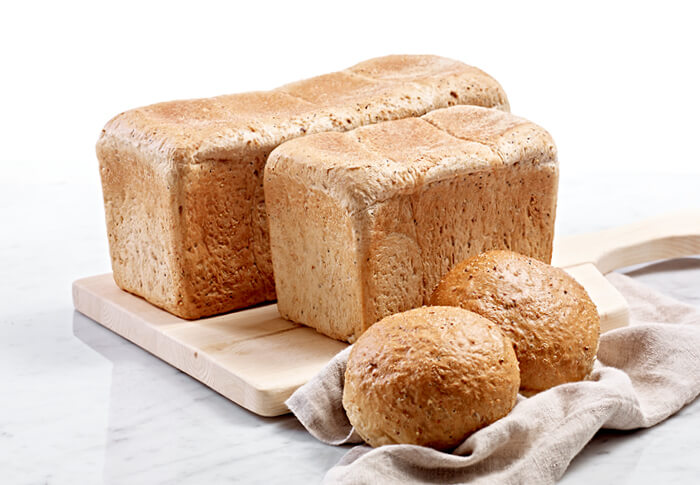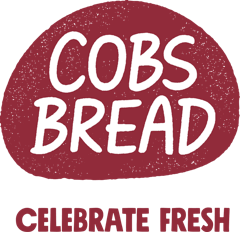What is the Low FODMAP Diet?

COBS is excited to announce our new range of tummy-friendly, fresh baked LowFOD™ loaves and buns! Our LowFOD™ range is easier to digest, and easier to love. These loaves and buns are low in FODMAPs, making them perfect for anyone following the low FODMAP diet.
Our friend and Registered Dietitian, Stephanie Dang, RD, tells us more about what the low FODMAP diet is and who might benefit from following it. Read on below to hear what Stephanie has to say.
The Low FODMAP Diet
The low FODMAP diet has been getting a lot of attention these days, but don’t worry – it’s not just another fad diet! The low FODMAP diet was created by Monash University and has been shown to reduce gastrointestinal symptoms in people with irritable bowel syndrome (IBS). IBS can cause a variety of symptoms that affect quality of life, including bloating, abdominal pain, diarrhea, and constipation. The low FODMAP diet involves a phase of eliminating high FODMAP foods followed by a reintroduction phase so IBS sufferers can identify any potential dietary triggers for their symptoms. Because IBS is so individualized (everyone’s symptoms are different!), the low FODMAP diet is also highly individualized. It can get pretty confusing, so before starting the low FODMAP diet, seek advice from a Registered Dietitian or physician who specializes in digestive health.
What are FODMAPS?
FODMAPs stands for Fermentable Oligosaccharides, Disaccharides, Monosaccharides and Polyols. Now the real question is, what do those mean?! FODMAPS are types of carbohydrates that are found in a variety of different foods and they are highly fermentable when digested. This fermentation process is a normal, healthy part of digestion. However, someone with IBS can experience unpleasant symptoms as a result of the fermentation process, including bloating, abdominal pain, gas, diarrhea, and/or constipation.
Examples of Low and High FODMAP Foods
FODMAP containing foods are grouped into different categories. And remember, portion sizes matter! A food can be low-FODMAP with a small serving size, but be high-FODMAP with a larger portion. Here are some examples of low and high FODMAP foods.
Oligosaccharides: Fructans & Galactans
- High: Wheat, barley, rye, onions, garlic, ripe bananas, dates, beans, cashews, dates
- Low: Blueberries, cantaloupe, grapes, lemons, pineapple, almonds
Disaccharides: Lactose
- High: cow, sheep, and goat milk, yogurt, ice cream
- Low: lactose free milks, coconut milk, most cheeses, lactose free yogurt
Monosaccharides: Fructose
- High: apples, cherries, watermelon, honey, high fructose corn syrup
- Low: strawberries, honeydew, spinach, potatoes, oranges
Polyols
- High: sugar alcohols, sugar free gum, cauliflower, apricots, apricots
- Low: maple syrup, white & brown sugar, pineapple, raspberries
For a full database of low and high FODMAP foods, go to www.monashfodmap.com
Note: please check the Monash website or app for more information about portion sizes.
Do I need to follow this diet?
This diet is primarily designed for people with IBS. Before starting this diet, speak with a registered dietitian or physician who specializes in gut health. They can walk you through the elimination phase, reintroduction phase, and maintenance phase. Remember, this diet is highly individualized, so someone else’s low FODMAP diet may not be the same as your low FODMAP diet!
COBS’ New Baked Fresh LowFOD™ Bread
For people with digestive issues, bread is one thing that doesn’t always love them back. Now, individuals who suffer from digestive issues, bloating, discomfort, and those with IBS can fall back in love with bread again with COBS’ LowFOD™ loaves and buns. Using a delicious mix of grains and seeds including oat bran, sesame seeds, poppy seeds, flax seed and kibbled sorghum, our whole grain LowFOD™ range is easier to digest and tastes delicious. This may be the beginning of a beautiful relationship… with bread.
Learn more about our LowFOD™ loaves and buns!
The information provided is strictly for informational purposes, and not intended to provide medical advice or to diagnose or treat medical conditions. Please seek advice from your physician or registered dietitian if you would like to know more about the low FODMAP diet.
Citations:
The Low FODMAP Diet. Monash University. https://www.monashfodmap.com/
When a Registered Dietitian Becomes the Patient: Translating the Science of the Low FODMAP Diet to Daily Living. Carol Rees Parrish, M.S., R.D.. Nutrition Issues in Gastroenterology. https://med.virginia.edu/ginutrition/wp-content/uploads/sites/199/2018/05/Low-FODMAP-Diet-May-18.pdf
